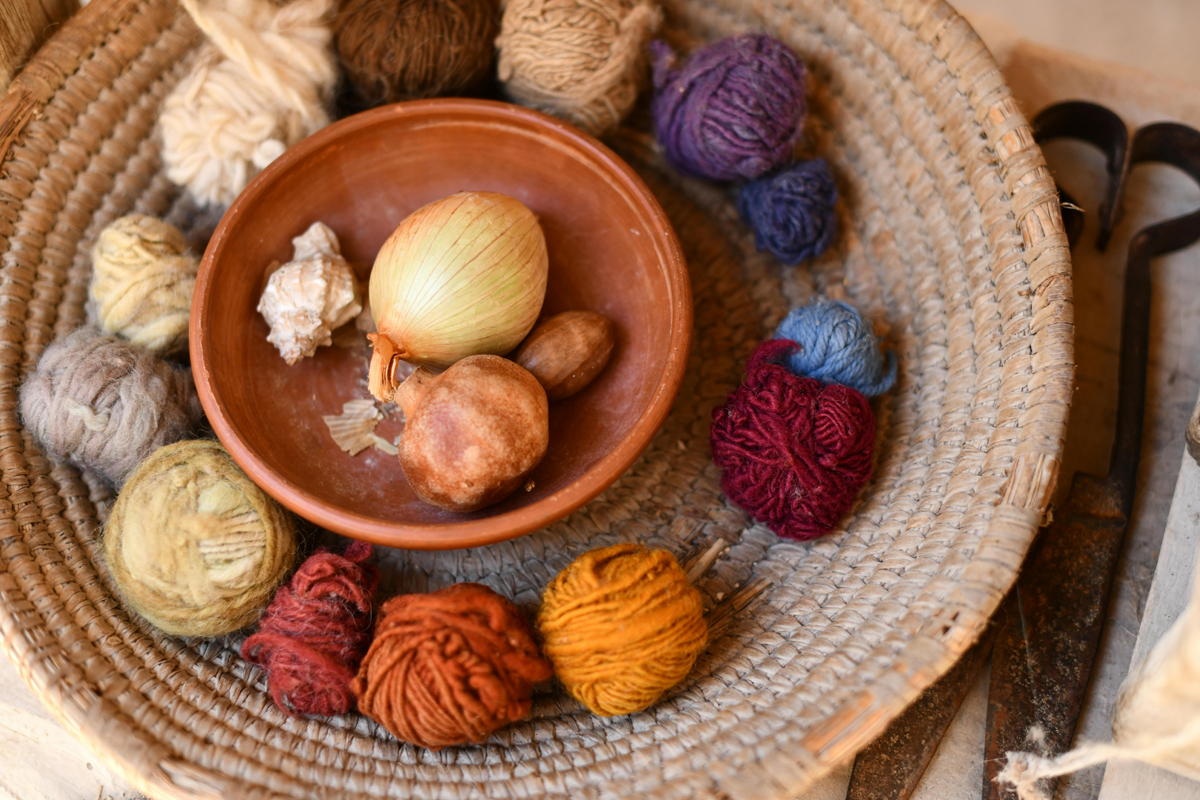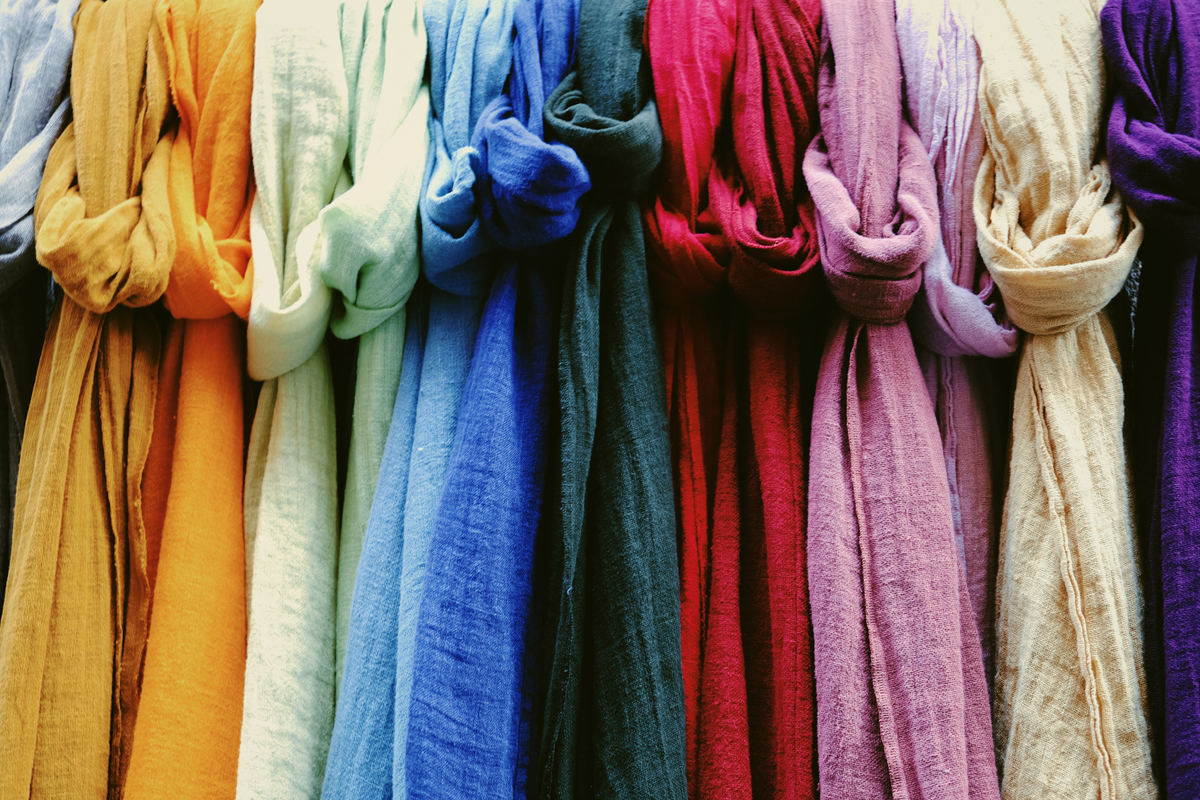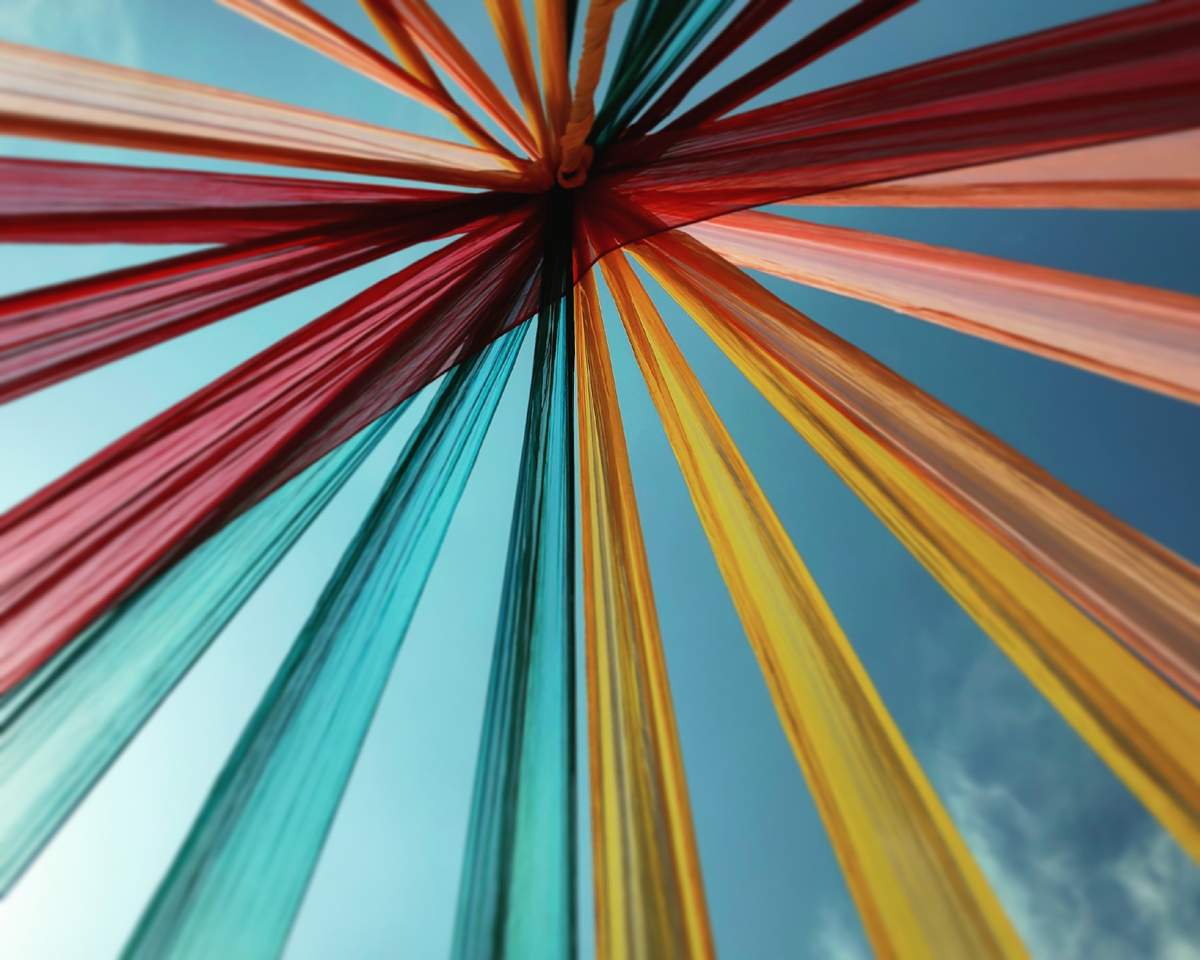Natural Dyes – Tips for Getting Bright Colours on Wool

I will share with you some secrets that I have learnt over the years on how you can get bright and strong colors with natural dyes. It is vital to both prepare the wool properly and to use tried and tested traditional natural dyes, such as woad, weld and madder etc. Chalk may help to brighten up some colors, whilst using rainwater is important for other colors. There are also a couple of easy tricks that you can use to get dark colors.
The Wool
Some types of wool take color better than others and white Blue-Faced Leicester wool is my favorite. Yarn is much easier to handle in the dye pot but you often get better dye penetration on clean fleece.
Knitted items, on the other hand, can be difficult to dye. You need about 10 litres of dye liquid for 100 grams of fibre and a 500 gram knitted jumper would, therefore, need a very large container.
Soaking
Whatever type of wool you use, it will benefit from being soaked in water for at least two hours. Soaking the wool opens up the fibres, making the wool easy to scour, mordant and dye; the fibre is also less likely to float at the top of the dye bath. Leaving the wool longer in the saucepan during any of the steps below can also help to produce darker colors.
Preparation
Failure to clean wool properly is one of the main reasons for not getting good colours from your dyes. Wool needs to be well scoured before it is dipped in the dye pot even if it has just been bought and looks clean. Scouring is much more than washing; when you scour you remove grease and oils from the fibre as well as dirt.
After scouring the wool needs to be mordanted. With the exception of woad and the indigos, most natural dyes do not adhere very well to the fibres and need the help of a mordant. A mordant is a chemical binding agent that adheres well to both the fibres and the dye. I use alum and cream of tartar to mordant wool.
The Dyes
You will get much better color if you use traditional natural dyes that have been tried and tested for hundreds of years. Tropical wood dyes such as brazilwood, logwood and fustic produce bright colors very easily. Cochineal is a very strong dye but it produces much brighter colors if you use rainwater.
Woad, weld and madder are some of the best European dyes. Madder likes hard water and adding a teaspoon of chalk to a madder dye bath makes for stronger reds. Chalk can also brighten wool dyed with weld considerably, changing it from a dull buff to an almost neon yellow.
It can be difficult to get dark blues with woad using a chemical vat as the Spectralite can strip the color from the wool as fast as it is being deposited. The secret to very dark blues either with woad or indigo is to use a fermentation vat rather than a chemical vat.
Master dyers often build up the color in layers. Rather than using a very strong dye bath, they re-mordant the wool after it has been dyed, and either put the wool back into the dye pot or over-dye it using another color.
Proportions
Instead of using, for example, 100 gram of madder to 100 gram of wool to get red, you could try splitting the wool into three lots. Adding just the first batch to the dye bath made with 100 gram of madder should result in a very dark red. Take the first batch out and add the second batch. This way you end up with a gradation of very dark to light red, rather than an uniform medium red wool.
Easy Tricks for Dark Colors
Adding a pinch of iron (as ferrous sulphate) at the end of the dye bath can darken the colors dramatically. Make sure you only use a pinch, as too much iron damages the fibres. It is also important to wash the wool well afterwards to remove all traces of iron.
The easiest way to get dark colors, however, is to start with dark wool. According to the British Coloured Sheep Breeders Association ‘when colored wool is over-dyed it develops a depth of color far beyond that achievable with white wool’. My favorite colored wools are grey Jacob’s and brown Blue-Faced Leicester. This may give you the incentive to start exploring the wool of small and endangered breeds of sheep and even to start spinning.
The Author:
Teresinha Roberts is a Brazilian-born textile artist specializing in natural dyes. She is regularly invited to talk to weavers, spinners & dyers, environmental and other groups. Visit our website at Wildcolours natural dyes today! to buy natural dyes & dye extracts and to learn more on how grow and use natural dyes.
Photo. Rosa Stone
Source: Ab









good website and good information